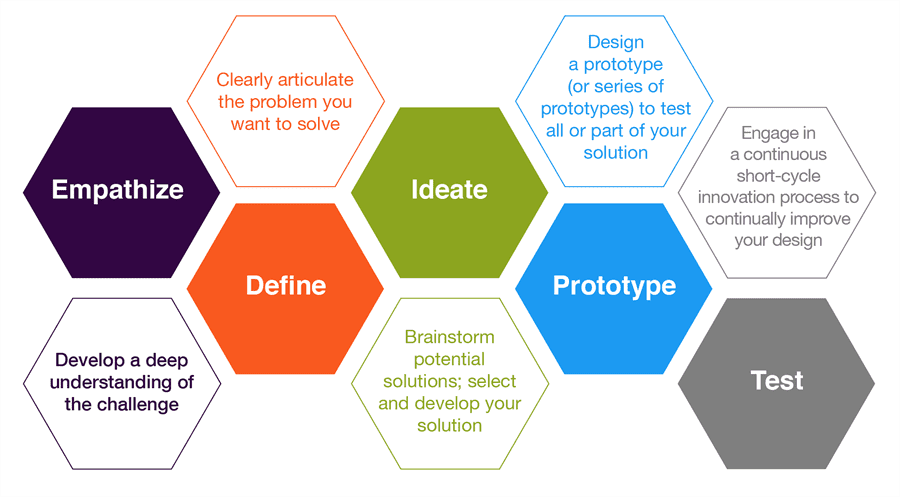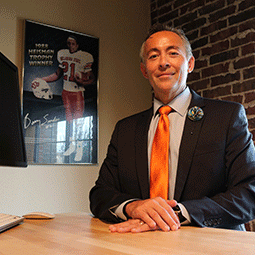
Everyone can probably tell you about a good customer experience - the kind that makes you happy and want to come back and maybe even tell their friends and family about the experience. So of course, you are much more likely to get their business in the future. But not only that, you can get free advertising and referrals from this experience as highly satisfied customers tell others about their experiences. Unfortunately for many businesses, the converse is even more true: customers dissatisfied with the experience are much more likely to tell others about their negative experiences.
So, how do you ensure that your customers are receiving a great experience? A great experience also worth telling other people about - an experience that results in greater brand loyalty, positive word-of-mouth, maybe actually evangelize about it, and eventually greater market share? First, understand what customer experience actually is.
Customer experience is every aspect or touch point regarding the brand throughout the customer’s journey into buying and using the product or service. Naturally, the customer experience is influenced by the product or service performance as well as the organization’s staff that interact with the customer at any point. But, it is also the impressions or even the feelings that the customer experiences when on their customer journey. All of these factors combine and interact to create an overall customer experience. The bad news is that customers have considerable power with so many alternatives and choices. The good news is that a company can be very intentional about creating or enhancing the customer experience. And, this can start with design thinking.
Design Thinking is essentially a problem-solving approach, initially developed in the field of design, which combines a user-centered perspective with rational and analytical research with the goal of creating innovative solutions.
Design thinking centers on developing an understanding of the people for whom the products or services are designed to serve. Design thinking seeks to create empathy with the target user. Design Thinking is extremely useful in tackling problems that are ill-defined or unknown, by re-framing the problem in human-centric ways, creating many ideas in brainstorming sessions, and adopting a hands-on approach in prototyping and testing. Design Thinking also involves ongoing experimentation: sketching, prototyping, testing, and trying out concepts and ideas.
Herbert Simon, Nobel Prize laureate, in The Sciences of the Artificial first proposed the primary principles of design thinking which included the following phases:
- Empathise – with your users
- Define – your users’ needs, their problem, and your insights
- Ideate – by challenging assumptions and creating ideas for innovative solutions
- Prototype – to start creating solutions
- Test – solutions
However, these phases are not completely sequential, but are iterative and each discovery impacts the other phases. A model of this process follows:

Design thinking assists an organization in improving its customer experience because of its basic emphasis of empathy for the customer. What is the customer experiencing? How can the experience be improved? These are the primary and fundamental questions that design thinking seeks to answer.
Apple is probably the most recognized organization that creates significant competitive advantages through design thinking concepts and practices. After Steve Jobs returned to Apple in 1997, he started to apply the design thinking characteristics which reflected his vision for Apple products. This vision is still forming Apple’s strategy. Steve Jobs applied design thinking by focusing on:
- 1. People’s needs and desires, rather than only the needs of the business
- 2. Building empathy by helping people to love Apple products
- 3. The design rather than the engineering work; designers consider both the form and the function of the product
- 4. Building simple yet user-friendly products rather than complex hard-to-use products
The vision characterized above can be clearly identified in modern Apple products. Although other competitors focus on the features and product capabilities, Apple focuses on a holistic user experience. For example, the iMac is renowned for being quiet, having a quick wake-up, better sound, and a high-quality display. This vision was formed in Apple’s development strategy that includes:
- 1. Excellence in execution
- 2. Using a platform strategy that streamlined Apple’s product portfolio to a family of products that can be produced much more quickly while keeping the existing design elements.
- 3. An iterative customer involvement where the consumer experience is integrated into the design and development stages through participating in usability testing with the design for interfaces focusing on the user experience.
- 4. Creating beautiful products which can be achieved through continuous innovation and development. Apple also focused on the materials and manufacturing process and took a bold approach to trying new ideas rather than sticking with the ordinary design forms.
Apple’s history with innovation provides a clear lesson about how design and innovation can turn company failure to market success and a leading position in a competitive market. Design thinking helped Apple to innovate while placing their consumers at the heart of the process.
A specific example of design thinking leading to a more successful product is Braun and Oral-B’s launch of its IoT electric toothbrush. Initially, Braun and Oral-B wanted to develop a sophisticated data-tracking tool that could sense how well users were brushing each and every tooth, tell them about their gum sensitivity, and play music. They were considering developing the toothbrush with similar features as an athletic activity tracker that records and processes information. However, toothbrush users already have significant guilt about not brushing long enough or most effectively. While the proposed product features would provide significant and potentially valuable data, actual consumers did not want this information.
Consequently, the two features Braun and Oral-B decided would be most useful were around charging the toothbrush and ordering replacement heads. At home, the toothbrush charges on a dock through induction but also comes equipped with a USB hookup for use on the road. The other problem to tackle was ordering replacement heads. Consumers can notice that the brush is worn down when they use it, but often forget to order a replacement after they leave the bathroom. To solve that problem, the designers built an app that the toothbrush connects to via Bluetooth. Pressing a button on the brush sends a reminder notification to the consumer’s phone to buy replacements. The final product that was launched using design thinking blended what is actually pleasurable and beneficial to users.
There is a significant difference in the design thinking approach used by Apple and Braun and Oral-B - design thinking is deeply incorporated in every aspect of Apple while Braun and Oral-B, very much in a mature market of oral and dental healthcare, used an outside design thinking consulting firm to create its new innovative electric toothbrush. Apple’s whole philosophy is innovation so design thinking is a critical part of that process. For most firms, especially those in mature industries or markets, innovation is harder to achieve. This is especially true for firms that are successful because they are often focused on maintaining competitive advantages. Often, it is simply easier to hire a design thinking oriented firm to envision a different future for the organization and potentially a better cultural fit than trying to create a design thinking culture throughout the whole firm.
As an example, Phase 2 used design thinking to enhance a customer experience that has been long-established - using a public library! Libraries across the nation were unable to offer remote services to those in need through one central application. Existing library software was pulling users in many directions by requiring multiple applications to be installed in order to access different content or content in different formats. The mobile application workflow involved downloading the library’s app and redirecting the user to log into several other pages in order to access content or library services. This cumbersome process for a seemingly simple task left users frustrated and in need of a better solution. Libraries have amazing content, but the challenge was making it easier to access the information beyond brick-and-mortar checking out materials.
Phase 2 created a user‐friendly mobile application that grants instant access to all of the currently available, instantly downloadable, and free resources – all with one single login. The solution was made possible by integrating multiple third party API’s into a unified platform. Native mobile apps were built on iOS and Android to give users a single point of access to all of the library’s content and services, giving users the ability to access ebooks, audio-books, magazines, reserve books and rooms, and search the catalog. The platform empowers Pioneer to add or change third party services as needed without harming their user’s experience.
This process increased the potential impact of a library system to the communities that it serves by focusing on how the customer’s experience and usage of the library could be enhanced to fit their preferences, behaviors and lifestyles. Phase 2 basically made it much easier and more convenient to use more of the library’s resources which makes the library a more valuable community asset. The library has changed as the customer has changed.
So, if your organization needs to consider not only how your customer is currently using your product or service but how they could use it or want to use it or a competitors, then Phase 2 could be a solution for you. Phase 2’s mission is to help organizations enhance the customer experience that leads to greater loyalty and revenues. The right place to start a technology project is the discovery of the underlying human needs. Why build the software project in the first place? What human issues are we really solving? How will it make an individual and the organization better, faster, and smarter? These are key questions we discover before we begin any project. Our discovery consulting is designed with two goals in mind: to gain a clear understanding of the actual problems and opportunities faced by the business, and identify the distinct, measurable success that will come from solving those issues with technology. Our process is a result of years of experience, constant experimentation, and organic evolution. We always start with human beings. Information architecture designed around the needs of the actual people using the product is our first step. This turns into software architecture to facilitate those information goals. And, we are always available to start a conversation with you to assess your customer experience.
To learn more about the software development process at Phase 2, schedule a consultation with our team or email info@phase2online.com .
If you enjoyed this blog, make sure to read A Culture of Creativity and Its Necessity for Software Innovation .

